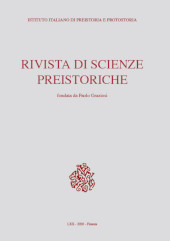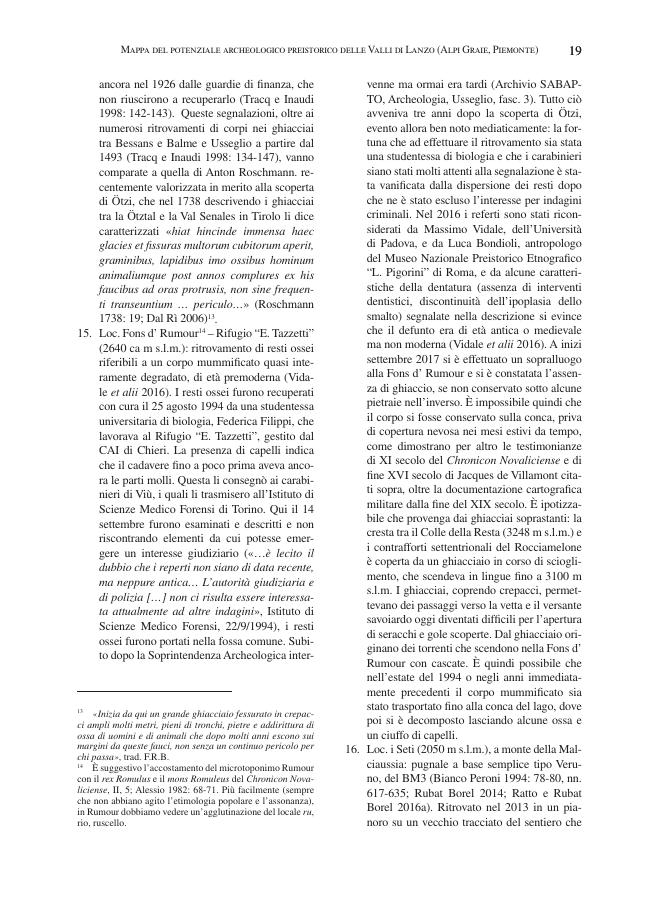Mappa del potenziale archeologico preistorico delle Valli di Lanzo (Alpi Graie, Piemonte) : applicazione di un modello predittivo
P. 57-93
In 2019, Soprintendenza Archeologia Belle Arti e Paesaggio per la Città Metropolitana di Torino and the University of Ferrara signed an agreement to collaborate in the development of projects aimed to research, promotion and protection of the pre-protohistoric archaeological and palaeontological heritage of the Lanzo, Orco and Soana valleys (Graian Alps). The first area involved in the project is that of the Lanzo Valleys, an area of 583 km2 composed by three large valleys (Val Grande, Val d'Ala and Val di Viù). For this area, sporadic findings and archaeological contexts are already known and represent a starting point for the development of the research project.
However, in an alpine environment, accessible just during summer and in the beginning of autumn, it is necessary to optimise time during field works and land surveys: for this reason, as a preliminary step, a GIS predictive model has been elaborated through the interpolation and interpretation of the different environmental and archaeological data available. This methodology has already been successfully employed in the Sessera Valley and indicates with a probabilistic percentage the location of archaeological contexts in a certain territory. Starting from the model elaborated for the Sessera valley, new parameters have been introduced, as to exclude areas not suitable for land survey, such as strongly anthropized territories.
The realization of the predictive model can be divided in five steps: 1. definition of "archaeological potential"; 2. identification of the parameters useful for the realization of a predictive model suitable for the Lanzo Valleys; 3. GIS analysis; 4. evaluation of environmental factors that could give false positive outputs (this step is very important, since it allows to address land surveys in those areas where the presence of archaeological context is more probable); 5. overlapping of the archaeological potential areas with the prehistoric sites already known in the considered area. The elaboration of the GIS predictive model for the Lanzo Valleys allowed to identify as APAF (Aree Potenziali Archeologiche Finali), those areas where the parameters considered to be significative for the presence of archaeological contexts are satisfied: i.e. flat and open areas facing south, close to water sources and not involved in landslide phenomena.
Finally, the overlapping between the APAF map and the pre-protohistoric contexts known, shows that these last are located within or in the immediate surroundings of the archaeological potential areas indicated by the GIS model. The high correlation between the predictive model and the known sites of the Lanzo Valleys, led us suppose that the future field works and land surveys in the archaeological potential areas identified could led to the discovery of further archaeological contexts and to a deeper knowledge of the pre-protohistoric peopling of the Lanzo Valleys. [Publisher's text]
Is part of
Rivista di scienze preistoriche : LXX, 2020-
Articles from the same issue (available individually)
-
Information
DOI: 10.32097/1107
ISSN: 2282-457X
KEYWORDS
- Alpi, archeologia in ambiente montano, modello predittivo, ghiacciai, Piemonte
- Alps, archaeology in mountain environment, predictive model, glaciers, Piedmont



